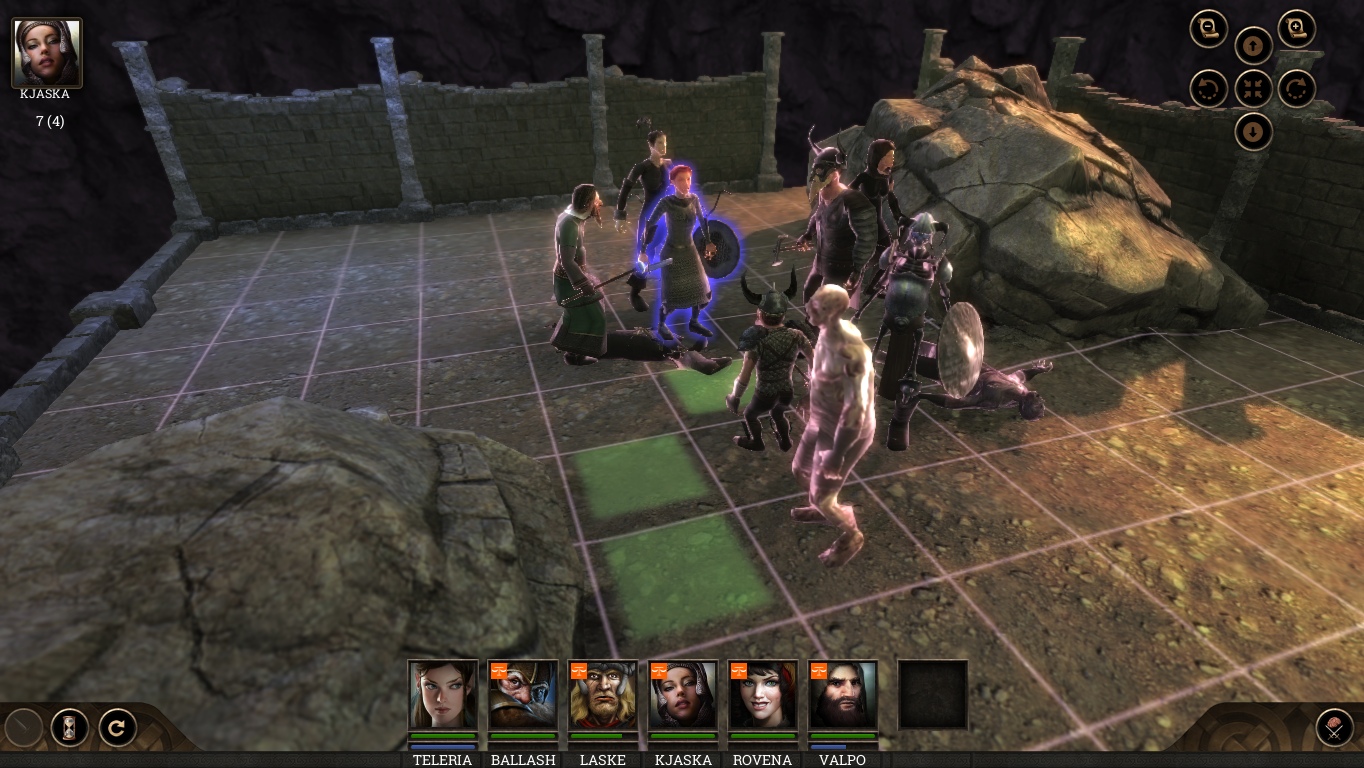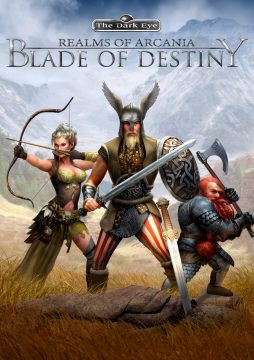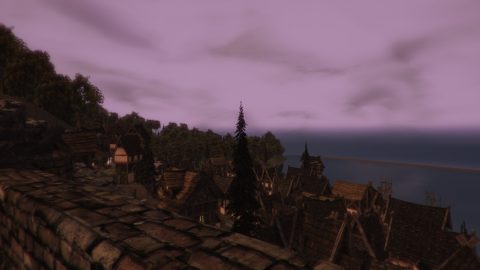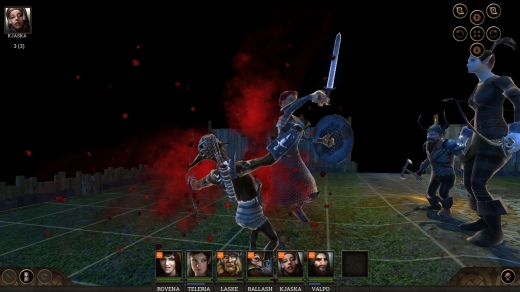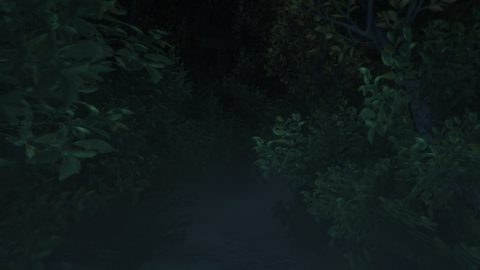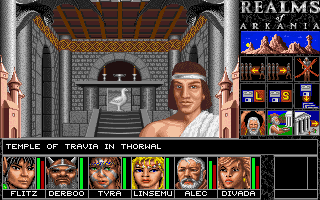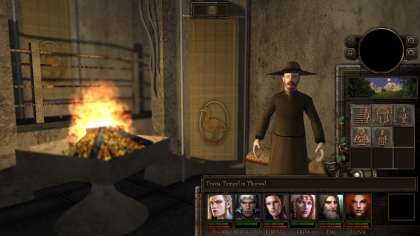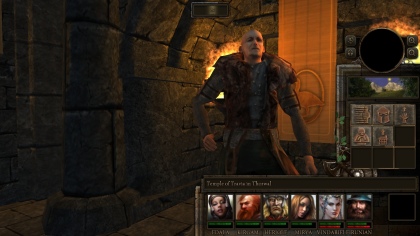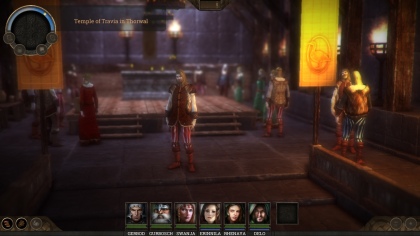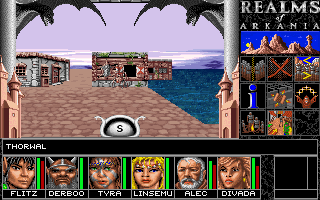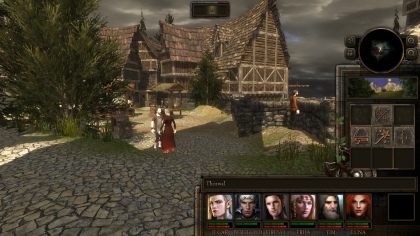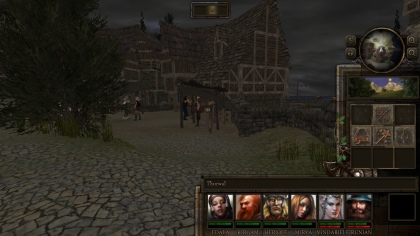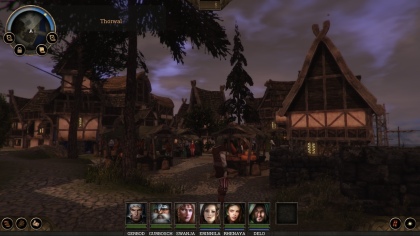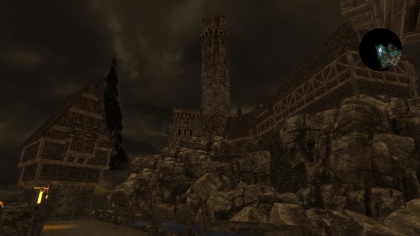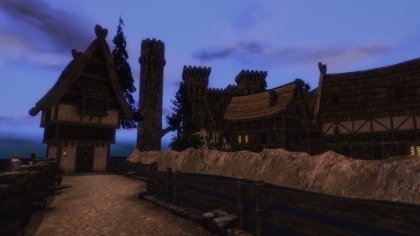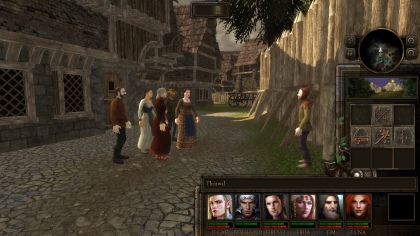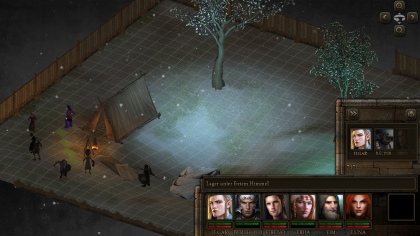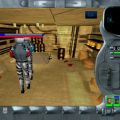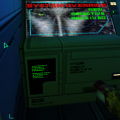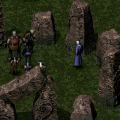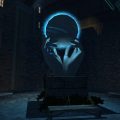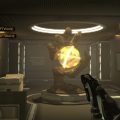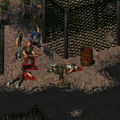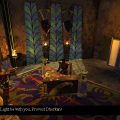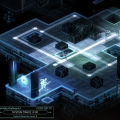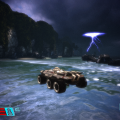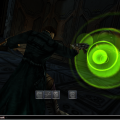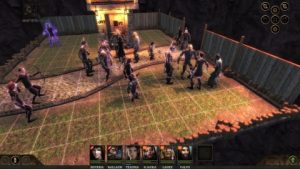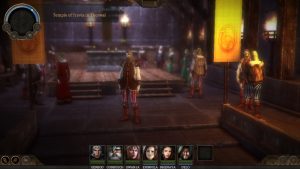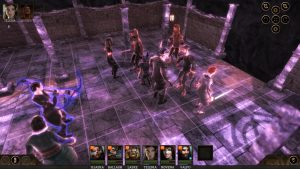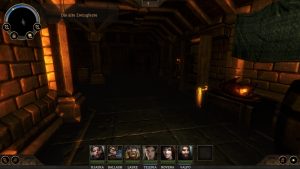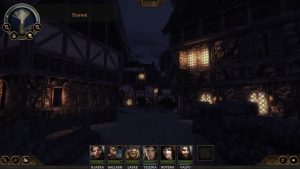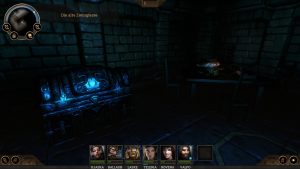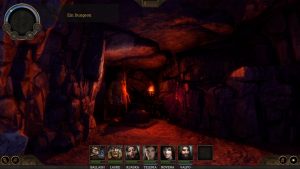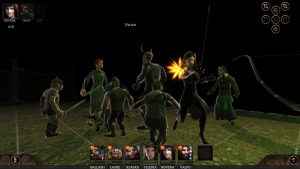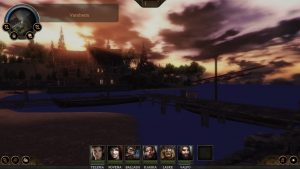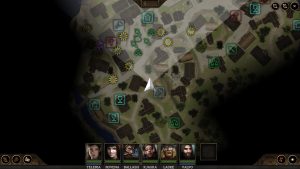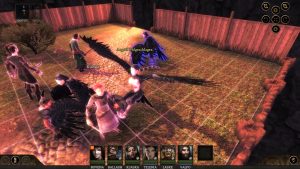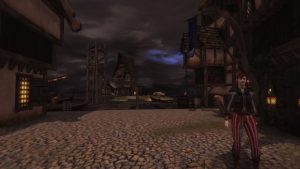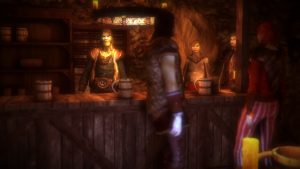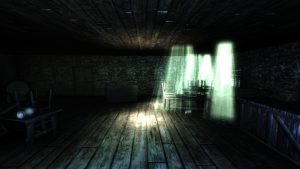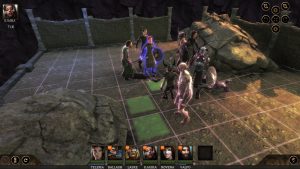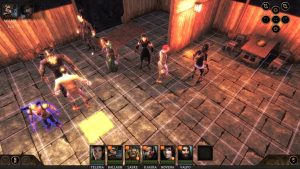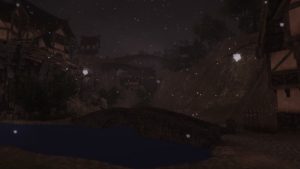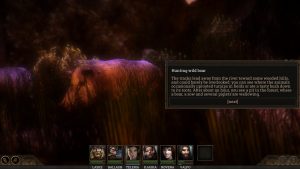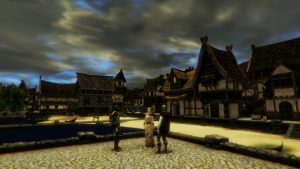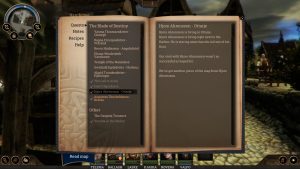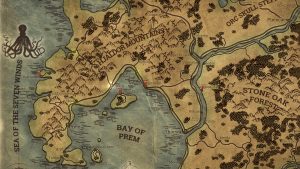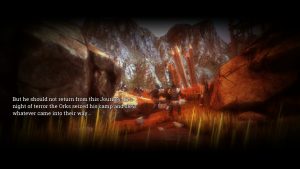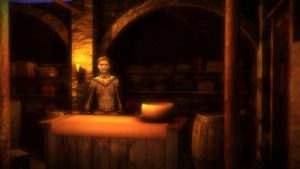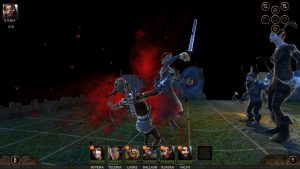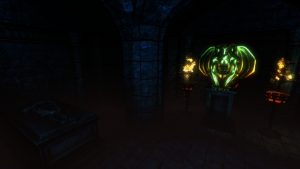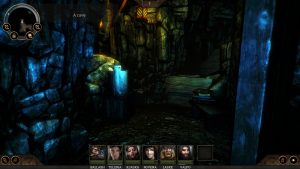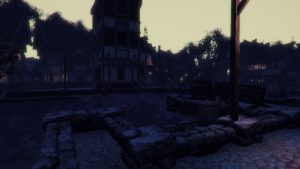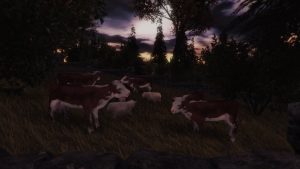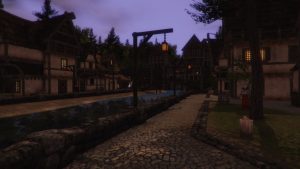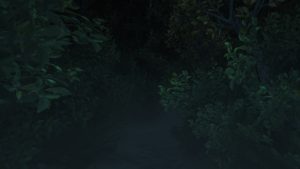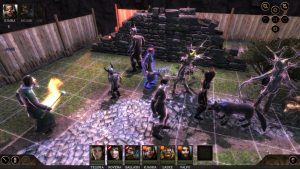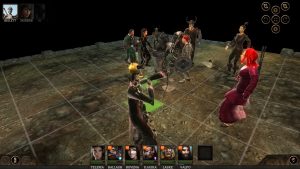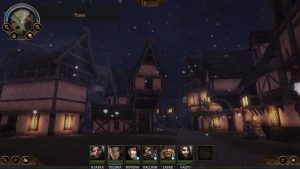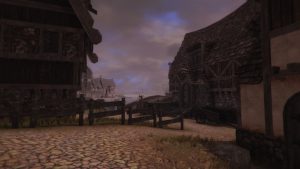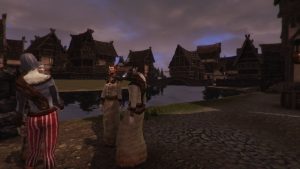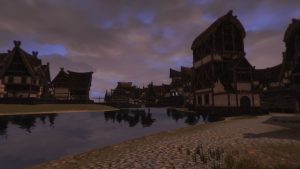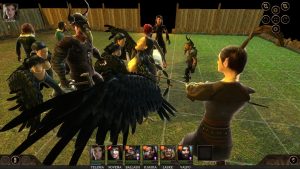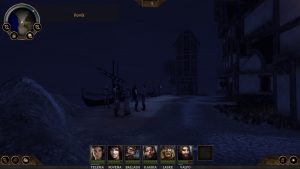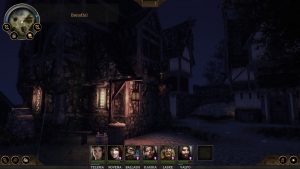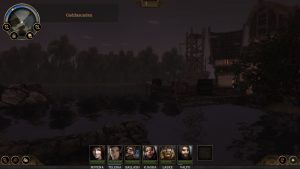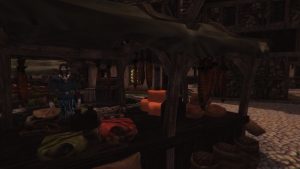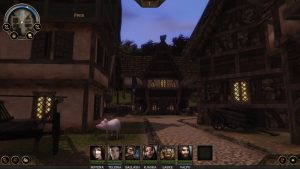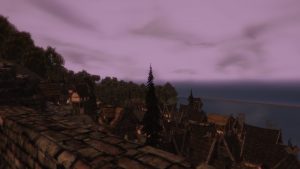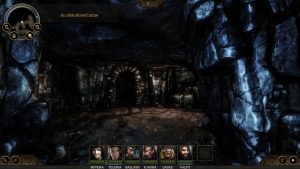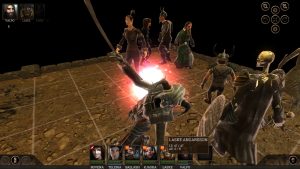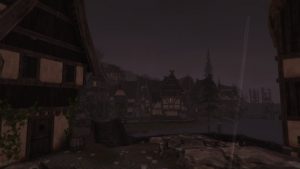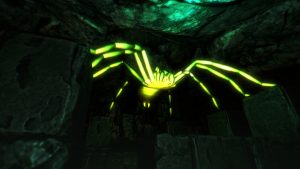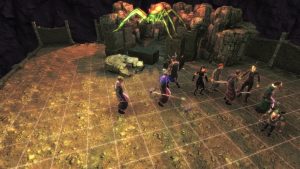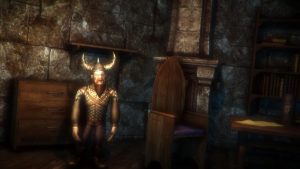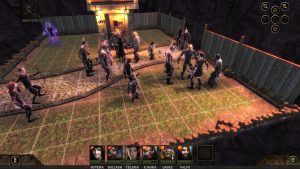- Realms of Arkania (Introduction)
- Realms of Arkania: Blade of Destiny
- Realms of Arkania: Star Trail
- Realms of Arkania III: Shadows Over Riva
- Spirit of Adventure
- Realms of Arkania: Blade of Destiny (HD)
The Realms of Arkania trilogy maintains a tiny but loyal hardcore fanbase up to this day. There simply haven’t been any games more pleasing to P&P fans since then, and although Shadows Over Riva allows a final save after the end of the game like its predecessors, Attic never made an official fourth episode. According to Guido Henkel, more adventures in Aventuria’s southern regions were planned, but never entered actual development. After all, traditional CRPGs were already in decline even when Shadows Over Riva was released. The Attic team eventually parted ways: Guido Henkel went to the USA and produced Planescape Torment at Black Isle Studios, only to leave the company during development. Later he tried to kickstart a throwback to classic CRPGing named Deathfire, but didn’t manage to get the support it needed. Hans-Jürgen Brändle, in many ways the soul behind the series, passed away in 2005. Of Attic’s founding members, only Jochen Hamma remains in the German games industry, and produced the fourth in the Gothic series, which was uncannily main-titled Arcania.
A true successor in the spirit of the trilogy might never come to be, but eventually German budget publisher UIG Entertainment acquired the rights to remake the original three games. UIG claimed that these are produced in cooperation with “Attic,” although it’s dubious what that means or who Attic is supposed to be nowadays. The actual developer was Crafty Studios, who until then where focused on creating browser-based games. That of course begged the question: Can a budget publisher and a casual browser game developer rise up to the task and resurrect a hardcore CRPG series?
Well, at first it seemed to turn out they don’t. When the new version of Blade of Destiny was released, it was a major trainwreck. It missed numerous features and content from the original game, it looked terrible with abysmal performance to boot, and it was riddled with bugs over bugs over bugs. Apparently even the original producer at UIG was pulled from the project to push it out regardless of quality concerns. The game in its release state was easily the worst in the whole year of 2013 (and that was the year when Ride to Hell: Retribution came out). Appearing aside the fact that UIG started to sell the original Blade of Destiny – which for years had only appeared in retail bundled with the rest of the trilogy – as a standalone a few months prior, this seemed just like another cynical botch job geared at scraping some quick buck by exploiting nostalgia.
But then, something surprising happened: Over the next few months, Crafty Studios – whose core team for the game consists of only two guys – kept slaving over the game, putting out more than 30 patches in quick succession. By the end of the year, the remake was barely even recognizable as the alpha quality product that was first sold. It looked better, worked better and had a better performance. The below is a review of that version, which was used as the basis for the Gold re-release.
Structurally, the remake remains very faithful to the original. The main quest still involves gathering the pieces of a map that leads to the location of Hyggelik’s fabled sword. The area traveled is the same, with the same towns and the same dungeons. The game is still divided in first person exploration, tactical combat and traveling on the map. There are, however, a ton of changes in the details.
First of all, exploration no longer takes place on a grid, but the party roams around freely in the much more organically designed environments. Towns looked a bit drab in the vanilla release, but in the Gold version, almost all the graphics were revised. Now the settlements have become lively places with not only citizens running around, but also a bunch of farm animals, and the occasional deer at the town borders. The buildings look very same-y as their basic architecture is still the same in all towns, yet most of the more important ones manage to exude their own unique personality through their layout, especially the ones built around bodies of water or at the foot of mountains. There are some genuinely stunning sights to be had, and the occasional weather effects may not look particularly pretty, but add quite a bit to the atmosphere (except for the fog effect, which currently is just a very unhealthy color tint). The big towns like Thorwal and Prem are impressive in size, but that vastness is bought dearly with a heavy performance drop and increased load times upon entering.
Over the course of countless updates, the buildings have been thoroughly reworked once, and the NPC models were even replaced twice. In general things look much smoother than they used to, but this doesn’t come without tradebacks. Especially Thorwal more densely built and populated, and parts of it lay on hills as well, but those have been evened out a bit, presumably for performance reasons. Some unique building structures are gone as well. Things get even wilder with the inhabitants: In the first version, there were plenty of differently designed NPCs with a wide range of clothes and appearances, and even kids. However, they had very low detail and weren’t really appropriate for the setting and region. Those were later replaced by a more Norse-looking populace, who still looked rather crude and had some very questionable costume designs. By that stage, the kids were gone entirely. The latest set doesn’t include any kids, either, but the individual characters now look much more well-defined, even though they still are just dress up dolls with the same two basic character models and different faces. Somehow red and white striped pants seem to be a huge fashion fad around Thorwal, so better get used to seeing those a lot.
Dungeons received a similar treatment as the towns, and orientation is made a lot easier thanks to the more distinct surroundings and fluid movement. Uncovering the automap can get a bit glitchy, though, so it’s often possible to make out where there’s a secret room even if the party shouldn’t know it yet. Some of the dungeon layouts also have been simplified a bit, and the most insidious death traps were toned down.
Combat on the other hand is the weaker part of the remake. In place of the fixed isometric view of the original now stands a freely rotate- and zoomable map, but the shifting perspective means that the player has to correct the angle constantly, because individual fields get obstructed by other characters. It’s not as annoying as the initial release version was, with its uneven terrain (that had no gameplay implications) and much too large battlefields, but still far from optimal. The hero avatars still look pretty bad, and while they have more or less individual looks, these can only be randomly shuffled through during character generation. The variety of arenas is also a bit lacking, especially in the wilderness, where all battlefields are surrounded by wooden fences instead of trees or shrubbery, and sometimes even have street lights. The only true advantage it has over the original lies in using proper line of sight for ranged attacks and spells, which the old series first introduced with Star Trail.
Otherwise the tactical gameplay hasn’t changed much, but even in the latest patched versions, there still are lots of technical issues. Sometimes combatants get stuck and rotate in place for a while. There is an option to make the camera automatically move to the currently active character, but that doesn’t always work as intended, especially when the game is also set to a higher animation speed – the default is really slow. An “action camera” is also available, but it is simply a zoomed-in rotation around the attacker, which only causes more opportunity for the camera to spazz out and hang up the game temporarily. Furthermore, unconscious characters can no longer be targeted for healing spells, so when heroes go down while poisoned, there’s nothing the player can do to prevent their death.
The rule set is mostly kept as is, with some exceptions – blunders in combat, for example, now depend on weapon proficiency instead of being completely random, which never made much sense in the first place. Throughout the many patches, Crafty Studios introduced a lot of small tweaks that where not in the original game. Druids now can perform dagger rituals that grant special advantages, similar to the magician’s staff magic. A recent version added good and masterful variants of weapons with slightly improved stats but prohibitive prices, to offer some incentive to spend any money late in the game. On the downside, a lot of spells have been left out. This includes many of those that could never be used in the whole original trilogy, but also the more powerful summoning spells. Demonology therefore is completely dropped as a spell school (although a few of its spells appear elsewhere). With the Jester an entire hero archetype is gone as well, but to be fair, those weren’t very useful to begin with.
In the original game, it was a pain to keep notes of all the hints and locations to visit to find the scattered map pieces. Blade of Destiny HD offers a handy quest log where their progress is tracked, alongside a separate page for the more general world info like the location of hunting places, traders with an above average assortment of goods and the like. It also contains a short list of game help items, which are by no means enough to communicate the intricacies of the system, but at least there’s a go-to place for the most bare basics to get a party on its way. While camping, it’s also possible to listen in on conversations between the party members, which always include further valuable hints at how to play the game without breaking immersion.
While Blade of Destiny HD does a lot to ease the way into the adventure, the balancing has been tweaked quite a bit against the player. Newly created heroes are astonishingly incompetent, and its not a rare sight to see them missing more than ten attacks in a row. The initial release was a bit too generous in distributing AP and money, but Crafty Studios since have made efforts to make the game economically challenging as well. As a result, both are much more sparse in the patched version. Selling goods now brings very little money (a bit more when selling to the right trader), and services at the smiths and healers are prohibitively expensive. Especially inexperienced parties at the beginning of the game are likely to be broke most of the time. In addition, the AP (=EXP) gain from fighting enemies is severely reduced. Gaining levels is now very much dependent on quest progress, so it takes quite a bit longer to improve the heroes. All this raises the barrier of entry even higher, but things quickly even out once the group gains a bit of footing in the world.
The music includes a score of entirely newly composed tunes in the nowadays mandatory bombast orchestra fare, complete with the occasional chanting choir. They’re not bad, but don’t have nearly as much personality as the original BGM. Sometimes the situational cueing seems a bit questionable – the party is just leisurely exploring a town, then suddenly the music changes to a highly dramatic climax for no reason. Fortunately, the old soundtrack is also included as “Legacy Score”. The more recent versions add voice acting for many scenes, which, given the nature of the presentation, mostly consists of a narrator, with a few pieces of direct speech in between. The German narrator has that warm, fuzzy fairy tale teller vibe, but the English one sounds somewhat insecure and is not very pleasant to listen to. There are also some very awkward pauses when the subtitles mention characters by name, and some hiccups where place names are translated in the voice over, but kept in their original form in the text.
Despite being (deservedly) slaughtered by the press upon its initial release, the game apparently still made enough money to justify to keep bothering with the series – Crafty Studios are already working on a treatment for Star Trail, and in the meantime two pieces of DLC have been added, a free one named “Ogredeath” and a paid one called “For the Gods”. Both ad a few new encounters and quests around areas where there wasn’t much going on before, as well as a total of three new dungeons. The new quests are a big plus. They are unique and quite interesting, and offer some excellent challenging combat encounters. The dungeons are rather hit-and-miss, though. One of them is a gloomy forest, which is a nice change of scenery from all those caves, but also very taxing on performance, even though the graphics have an extremely short drawing distance there. It also mostly consists of running down very long paths, with very little to do in between, but many opportunities to get stuck in the undergrowth. The other two are more conventional, but they’re all the better for it, even though they’re still just scenery for series of battles, without any interesting new puzzles or traps.
The game also allows modding, so there is more to look forward to in terms of user created content. Even though much of it will likely remain based around the German speaking fan community, some of the mods even make their way into the official patches. Versions for Xbox 360 and PlayStation 3 are coming in late 2014, but it remains to be seen whether those will be published outside of Germany.
In its current form, Blade of Destiny HD has finally justified its existence, and in hindsight, UIG and Crafty Studios could have saved themselves a lot of trouble by releasing it as an early access title on Steam instead of going straight to retail. Even though it doesn’t quite hold up when measured by modern RPG standards, by now it is probably the overall better choice to try and get into the series than the original. The old game simply has aged in a way that makes it hard to appreciate nowadays, and especially walking around in 3D has become much more enjoyable. The remake still has a lot of QA flaws, but so does the DOS game, and Crafty Studios are still working on patches, so hopefully the more noticeable bugs will still get sorted out. The major disadvantages that remain are the lack of visual representation for most of the quest NPCs and unique encounters like the griffons or the giant squid, and of course the need to wait for Star Trail HD (and probably its eventual patching) to carry on with the trilogy, and that one will give Crafty Studios an even harder time to improve on the excellent original in any meaningful way. The way Blade of Destiny came around in the months following its release leaves room for hope, though.
Attention: The version 1.30 screenshots were taken with minimum quality settings, so they cannot serve to compare effects like shadows and lighting, but they give a good idea over how the architecture and character models have changed. Unfortunately Steam doesn’t have a function to install old versions of a game, so we are not able to replace the screenshots.
